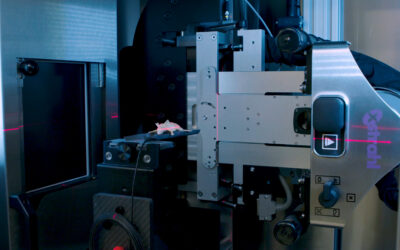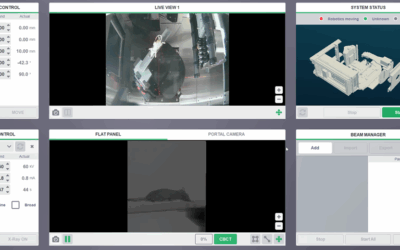Double-strand breaks (DSBs) are repaired by two distinct pathways, non-homologous end joining (NHEJ) and homologous recombination (HR). The endonuclease Artemis and the PIK kinase Ataxia-Telangiectasia Mutated (ATM), mutated in prominent human radiosensitivity syndromes, are essential for repairing a subset of DSBs via NHEJ in G1 and HR in G2. Both proteins have been implicated in DNA end resection, a mandatory step preceding homology search and strand pairing in HR. Here, we show that during S-phase Artemis but not ATM is dispensable for HR of radiation-induced DSBs. In replicating AT cells, numerous Rad51 foci form gradually, indicating a Rad51 recruitment process that is independent of ATM-mediated end resection. Those DSBs decorated with Rad51 persisted through S- and G2-phase indicating incomplete HR resulting in unrepaired DSBs and a pronounced G2 arrest. We demonstrate that in AT cells loading of Rad51 depends on functional ATR/Chk1. The ATR-dependent checkpoint response is most likely activated when the replication fork encounters radiation-induced single-strand breaks leading to generation of long stretches of single-stranded DNA. Together, these results provide new insight into the role of ATM for initiation and completion of HR during S- and G2-phase. The DSB repair defect during S-phase significantly contributes to the radiosensitivity of AT cells.
Sabrina Köcher, Thorsten Rieckmann, Gabor Rohaly, Wael Y Mansour, Ekkehard Dikomey, Irena Dornreiter, and Jochen Dahm-Daphi
Download Paper
SPOTLIGHT: Behind the Beam: Tips, Tricks, and Translational Research from the Karolinska Institutet X-ray Irradiation Core Facility
Access the highly anticipated Xstrahl SPOTLIGHT Session, "Behind the Beam: Tips, Tricks, and Translational Research from the Karolinska Institutet X-ray Irradiation Core Facility," on demand now. This essential recording is a must-watch for radiation researchers and...







